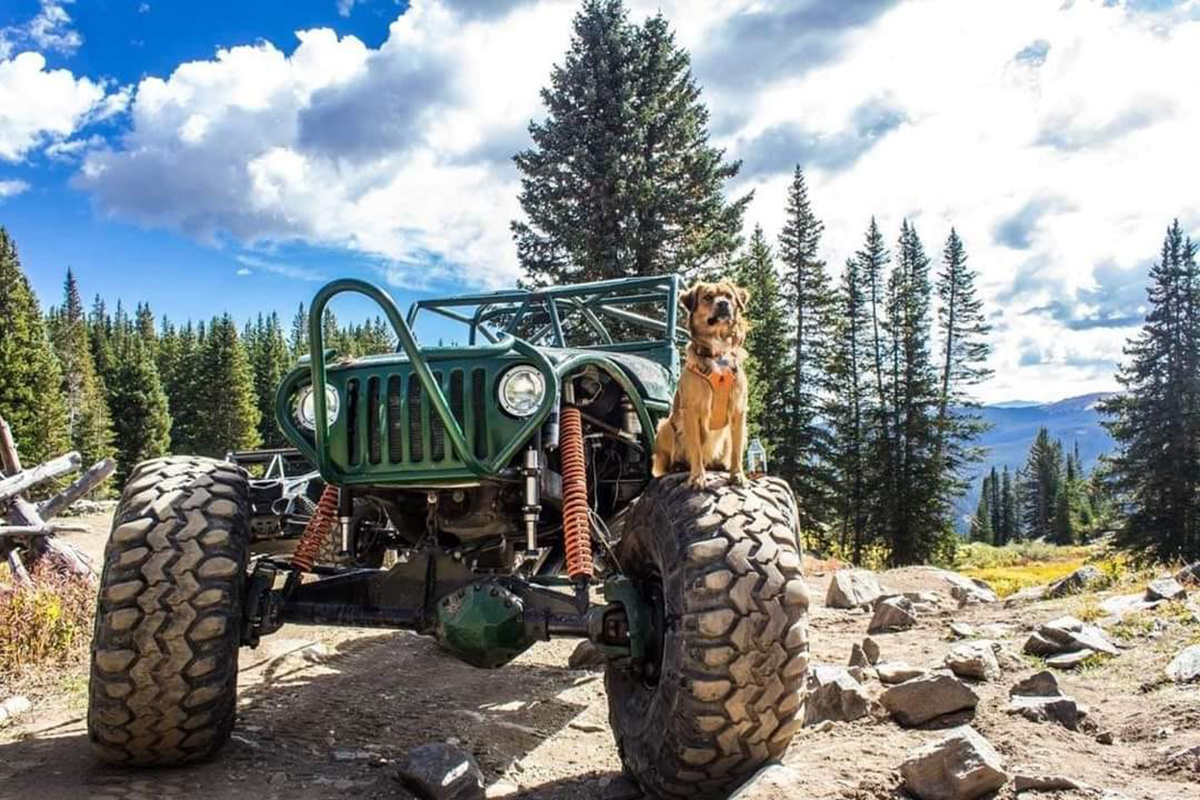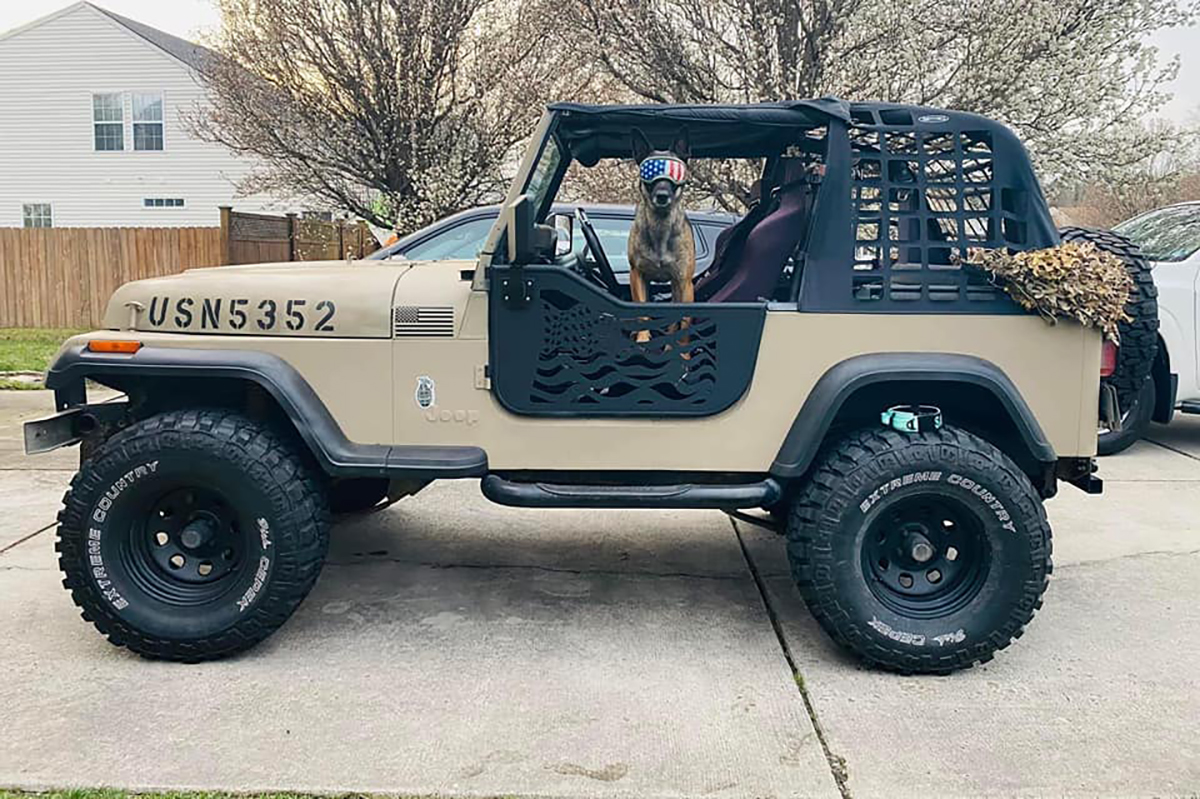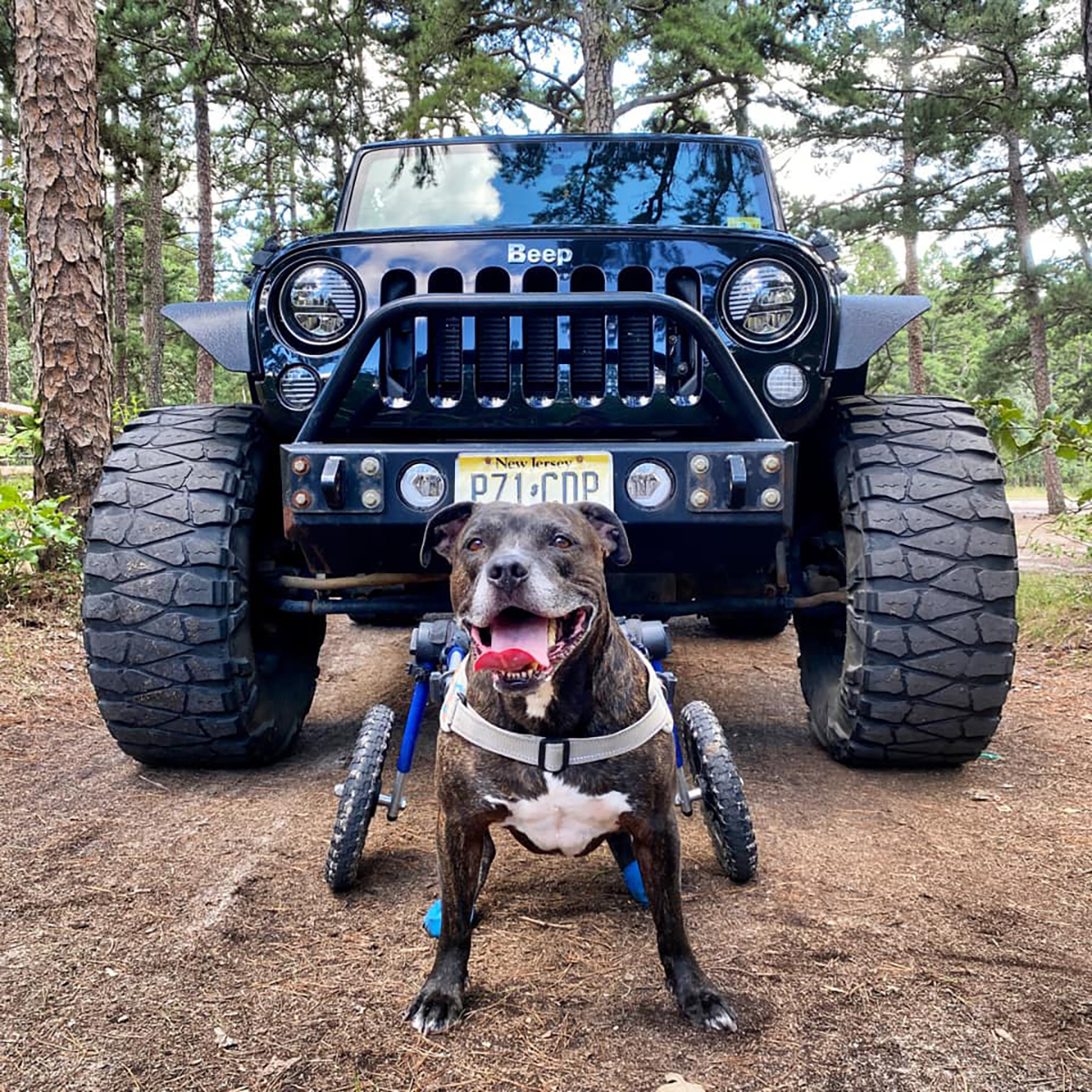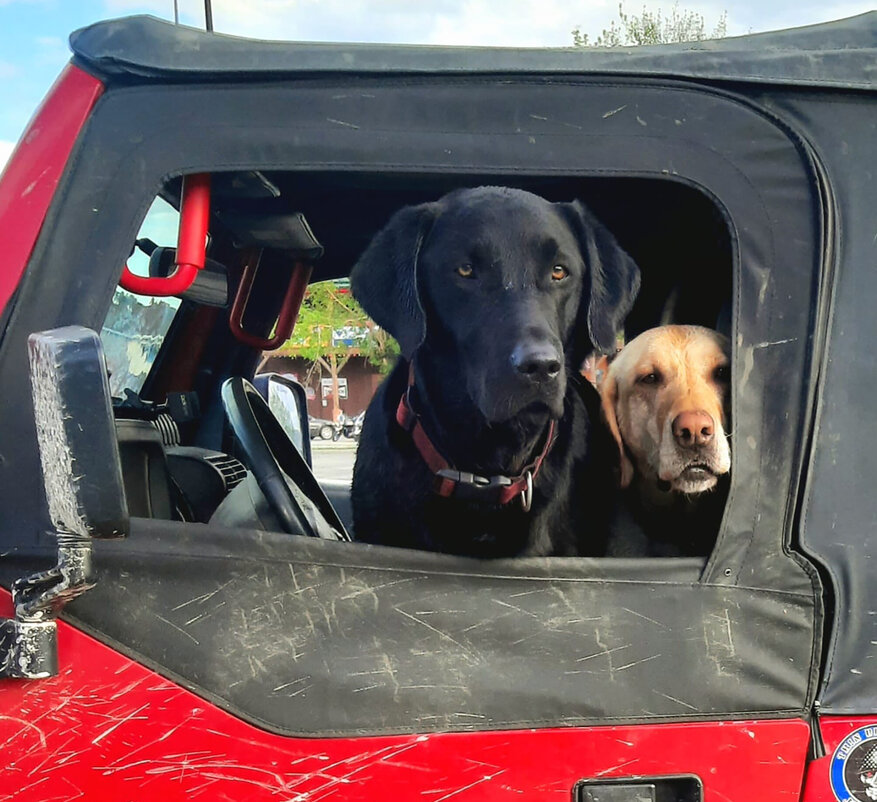by Mary Woolford
Special to Torque
We call them our best friends. Our faithful companions. Realistically, when you are planning a trip, you can’t go anywhere without your fur buddy. And that includes the trails.
But before you open the door to let your four-legged friend(s) inside the Jeep for a day, weekend, or even a longer off-road driving excursion, here is a question.
Is he or she ready for the trip?
After all, you prep your Jeep for the trails, right? You prep yourself for them as well. So, why shouldn’t you take the same care for your furry passenger(s)?
Here is what we mean.
Let’s name our dog Scout. Scout seems like an excellent name for a German Shepard.
Before you take Scout with you to the trail, you may want to consider a few things to make sure he has just as much fun as you while staying safe.
First, schedule Scout for a check-up with your veterinarian to make sure he is healthy for the trip. Underlying medical conditions that you aren’t aware of can really make your pet’s off-road adventure rather miserable.

Next, is Scout up to date on his vaccinations? While you are in the office, check with your vet to see which vaccines are best for Scout and if there are certain ones that are required such as rabies. Keep proof of any vaccinations with you in the form of a certificate or tag which is available through your veterinarian.
Then, talk with your vet about putting together a first aid kit for your pet—items such as Benadryl, Hydrogen Peroxide and rubbing alcohol. If needed, and applied correctly, these items can help your pet until you are able to get them to a veterinarian. One thing, though. Any first aid kit SHOULD NEVER be used as an alternative to seeking professional veterinary care.
If Scout and you are going on an extended trip such as an overland adventure, explain to your vet where you are going and for how long, and see what recommendations he or she has for you. Additionally, ask your vet about screening your pet for tick-borne diseases and any products that are available to prevent ticks, fleas and other parasites.
Just like us, our pets can develop arthritis as they advance in age, and a full day out in the Jeep can make your older pet uncomfortable. If you have an older animal and they have a hard time getting around it might be best for them to stay home as the trip could leave them sore or cause unnecessary stress.
Another thing to discuss with your vet is whether your pet has any known medical conditions. Pets who have a terminal illness or have been diagnosed with certain diseases would probably be more comfortable in their own home on the couch while you are out getting muddy.
Also, learn about your dog’s breed and if it is prone to any medical situations. Deep-chested, large breed dogs such as Scout, along with Great Danes and Weimaraners are at a higher risk of gastric dilatation volvulus, or bloat, which is a true emergency, and veterinary care should be found immediately. There isn’t anything in your first aid kit to help bloat. Nor is there likely to be a vet in your trail group.

During the summer, trails can be brutally hot and this will take a toll on you and your vehicle. The same thing goes for your pet.
A dog’s normal body temperature is between 99.5 and 102.5. When outdoor temps are hot and humid your dog can easily overheat causing hyperthermia or heat stroke. Dogs that are extremely stressed or super excited can also experience heat stroke even with a comfortable outdoor temperature.
So, let’s say you have a pug or a boxer. They are so cute when they snore, right? These types of flat-faced breeds have restricted airways and under certain circumstances can show signs of heat stroke even when the outside temps are only slightly elevated.
Consider leaving your pet at home if the outside conditions are scorching, or if you have a breed that has a high risk of heat stroke. When your pet’s temperature soars to 105, 106 and even 107, this is an immediate medical emergency and you need to get off the trail and to the closest open emergency veterinary hospital ASAP.
At the vet, talk about how to use certain things in your first aid kit such as rubbing alcohol that will possibly help Scout while you are driving to the closest vet.

Speaking of hot days on the trail, make sure to pack plenty of fresh water for you and your pet. Do you really want them drinking water from that suspicious-looking water hole your group just drove through? Gross.
Some of the water holes you have seen at off-road parks are a certain color—you know the ones. Here in the east, this is a form of runoff from the coal mining days and you DO NOT want Scout drinking that water. In addition to growing a third eye, certain bacteria, parasites and other organisms can live in water and if ingested, could give your pet diarrhea or other medical problems.
Now, should your pet have a medical emergency out on the trail, would you know where to take him or her? Most of us travel a good distance to visit our favorite off-road park or state forest. We know where the closest gas station is located, as well as the local car wash and place to grab a bite to eat. But do you know the closest veterinarian's office? Knowing this info could save their life.
Remember, a lot of our trail time is spent on a weekend, and many regular veterinary hospitals have limited hours on Saturday and Sunday. Even if there is a hospital 15 minutes away from the off-road park, they very well could be closed. So take time and research where the closest emergency veterinary hospital is located, and have their phone number available.
Now, some pets who LOVE going “Bye Byes” in the Jeep may actually not enjoy going off-road. The trails are not all smooth and the rough terrain could cause stress or restlessness for Scout.
If your pet is not properly secured in the vehicle, they could also injure themselves or hurt you in an attempt to hang on during rougher driving. That stress can come in different forms including panting, shaking and diarrhea. So make sure to create a safe and comfortable place for them and that they are safely secured in the vehicle.
If you bring Scout outside of the vehicle when the group is stopped, be sure to have a properly fitted harness/leash. In the excitement of trail riding, as well as tons of new smells, Scout could easily slip out of his collar and make a break for it if you aren’t ready. Also, avoid retractable leashes. They can be dangerous and cause injury to you, your pet, or other people who are around.
Ok, so maybe you have a cute little Chihuahua that you call, well, Baby. Baby is typically an easy-going pal whose favorite thing is playing dress-up and watching Netflix. She is gentle and not aggressive in the comfort of her own home.
But when Baby is out of her regular environment, evil Baby could make an appearance.
To Baby, she must protect her family and may react in an aggressive way towards strangers. So always be aware of how your dog (or other pet) may react towards strangers and make sure they always feel safe.
If you and your sidekick are going away for more than one day, definitely make sure to pack an overnight bag filled with food and other comfort items. Keep it familiar, though. Picking up new dog food at the local grocery store just before a trip could upset Scout's stomach, and instead of wiping mud off your Jeep you might be wiping something else off instead.
We've been focusing mostly on dogs here, but some people may want to bring along all kinds of sidekicks like cats, snakes, parrots, goats, pigs and prairie dogs. If you are bringing an exotic pet to the trail with you, don’t forget to check with your veterinarian about how to keep these furry, feathered and scaly sidekicks safe no matter the condition.
Our pets trust and love us unconditionally, and they will follow us anywhere. It is our responsibility to keep them safe and comfortable at all times. Taking them on the trails can be a fun adventure for both of you, so remember to take time and ensure your pet is healthy and ready to enjoy the adventure along with you.

Related Articles:
How Do I Air Down My Jeep's Tires?





















